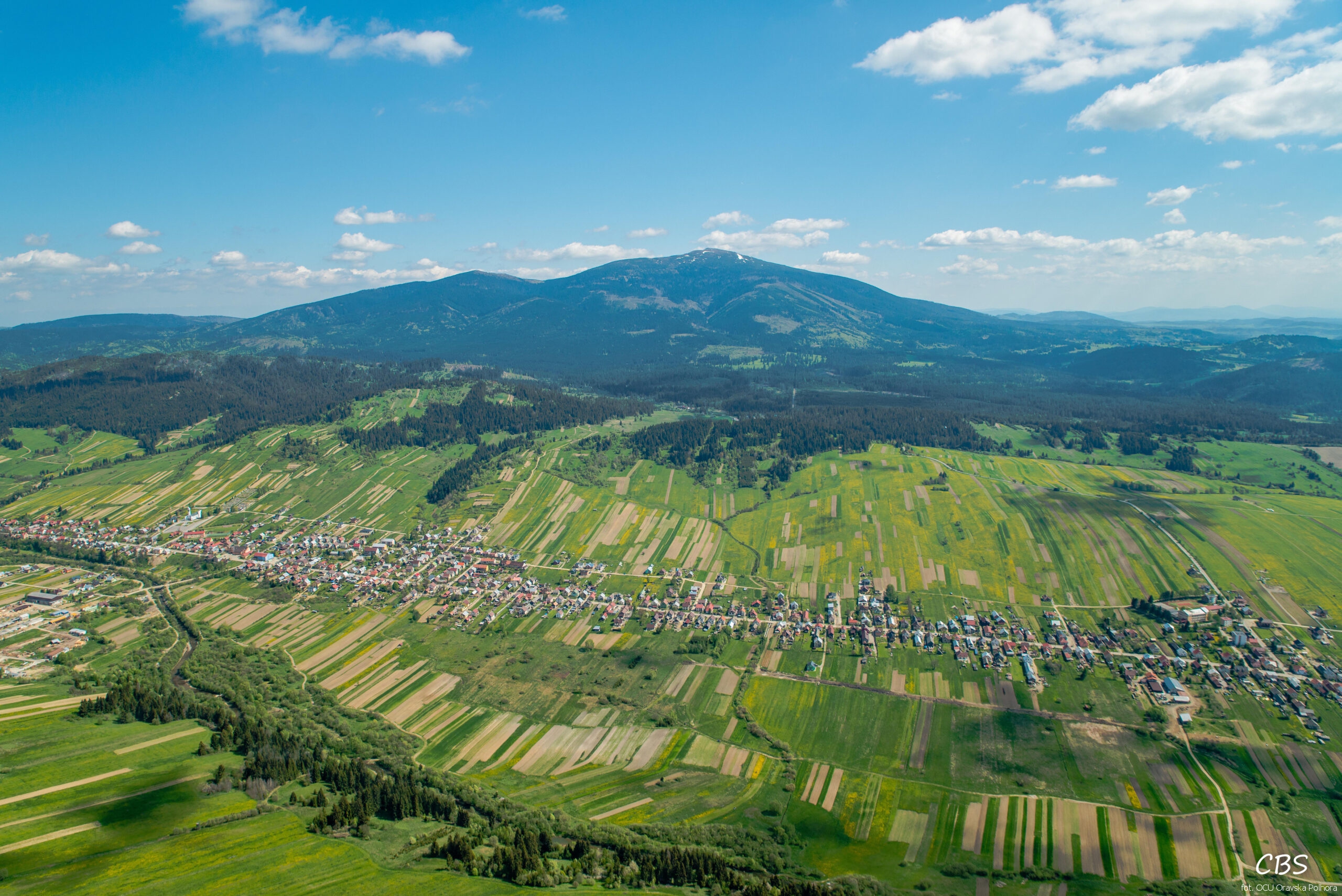A large Slovak village situated in the Polhoranka valley, in the Orava Beskyds. Administratively it is a part of the Námestovo district and the Žilina Region. Historically and geographically it belongs to Orava. It is the northernmost village in Slovakia and it borders, among others, with Zawoja (the Sucha County) and the border, in this part of it, runs along the border of Babia Góra. It was founded under Wallachian law in the mid 16th century. It occupies an area of 84.52 km² and is inhabited by approx. 4000 inhabitants.
The village is exceptional thanks to its unique natural and cultural heritage and its location among the picturesque peaks of the Orava Beskids (this is the name of the Żywiec Beskids in Slovakia), which are part of the protected natural area, the Horná Orava Landscape Park (CHKO). The biggest attraction of this region, just like on the Polish side, is Babia Góra (1725 m above sea level).
The natural peculiarities of Oravská Polhora include healing springs of iodine-bromine water in the Slaná voda hamlet. In the middle of the nineteenth century a small spa was established here, which made use of their healthful properties. The spa, popular especially at the beginning of the 20th century, ceased its operation during the First World War. The only preserved building, which was extended in the course of time, now houses a tourist hostel. In its vicinity, a mineral water intake for the public was recently opened in a wooden summerhouse. The iodine-bromine water is also used in a brine graduation tower opened in 2019, located in the centre of the village. The specific microclimate created by the water evaporating in the graduation tower enables healthy inhalations.
Another natural curiosity of Oravská Polhora are the very rare types of peatlands found here, which are included in the protection zone with the highest degree. These include the following peat bogs: Tisovnica, Polhorská Pila and Slaná voda. Slaná voda peat bog is the best preserved and thanks to a marked educational path it is also the most accessible for tourists.
In the northernmost corner of Slovakia, you can also see ‘tajchy’ (artificial water reservoirs) built at the turn of the 18th and 19th century, which in the past were used for floating timber felled in the surrounding forests. Nowadays, they serve as fire-fighting reservoirs. History lovers, on the other hand, can find among the woods and meadows of Oravská Polhora the remains of trenches and shooting nests from the World War II.

